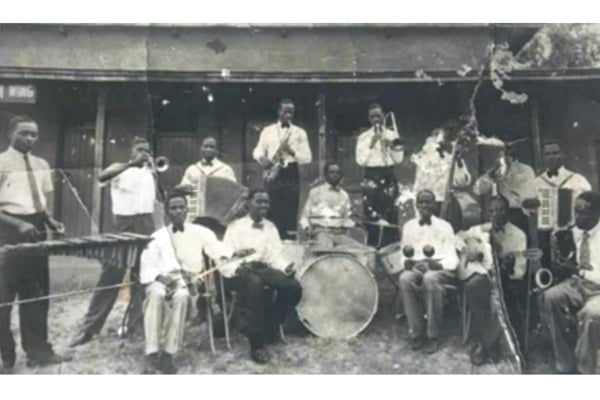Nightlife industry on the brink worldwide

A nearly empty bar in Kampala in 2022. Sky News notes that nearly 400 pubs in England and Wales closed their doors for good in the first half of 2023. PHOTO | FILE
What you need to know:
- This comes as a result of rising costs, regulatory challenges, and shifting consumer preferences towards alternative entertainment options.
An increasing number of pubs and bars drive the market growth as the urban population worldwide has increased by more than four percent over the past 10 years, the United Nations Conference on Trade and Development (UNCTAD) says.
In its Nightlife Industry Overview, the American Nightlife Association (ANA) adds that while the US bars and nightclubs market isn’t out of the woods yet, the music is undeniably upbeat.
“With a focus on innovation, catering to evolving consumer preferences, and navigating challenges strategically, this sector is poised to reclaim its vibrancy and clink to a prosperous future,” ANA notes, adding that “it’s not just about the drinks; it’s about the connections, the experiences, and the pulse of a vibrant nightlife scene that keeps America dancing.”
ANA’s body of work further shows that music tourism, a vital segment of the nightlife industry, is expected to grow at a compound annual growth rate of 6.6 percent between 2023 and 2030.
Festivals, concerts, and music-themed establishments attract travellers worldwide, boosting local economies and creating unique experiences.
Bars and nightclubs are increasingly integrating with the hospitality sector, offering food options, partnering with hotels, and creating multi-purpose event spaces. This collaboration benefits both industries, attracting a wider audience and enhancing the overall experience, ANA says.
According to ANA, the pre-pandemic peak put the US market size at $41.2 billion in 2019. By 2023, the market size had whittled down to $36.3 billion, per IBISWorld. The US-based company that provides analytical and forward-looking insight expects the market size to gradually improve to $38.2 billion by 2028.
The pre-pandemic peak global market size was $440.5 billion in 2019, according to ANA. The market size in 2023 was $468.2 billion (per Grand View Research). The projected market size by 2030 is $621.8 billion (per Grand View Research).
Benefits, key drivers
According to ANA, drinking establishments inject money into their local economy every year. Alcohol sold in bars and pubs adds value to local economies, but the drinking establishments themselves add jobs to the area and positively impact the economy. The association further notes that when community members patronise, these types of establishments and their tax dollars remain with the local economy. This ultimately benefits the community in question. Many drinking establishments also partner with other local businesses.
Drinking establishments and breweries have played a vital role in their communities for quite some time. They foster socialisation and bring community members together, positively impact the local economy, and reflect the community’s values by creating a welcoming atmosphere for local patrons, local organisations, and local causes. The nightlife industry has a significant impact on communities, both positive and negative, ANA adds.
According to ANA, the key drivers of the nightlife industry are rising disposable incomes (increased financial freedom, particularly in developing economies, is leading to more frequent visits to bars and nightclubs); evolving consumer preferences (a shift towards experiences and social interaction is driving demand for unique and immersive nightlife offerings); technological advancements (integration of technology, from interactive light shows to AI-powered bartenders, is creating personalised and engaging experiences); and growing tourism (as travel restrictions ease, international tourism is expected to rebound, boosting revenue for bars and nightclubs in popular destinations).
Challenges
The ANA singles out a number of challenges that the nightlife industry is facing. These include competition from online and mobile entertainment; shifting demographics (the Gen Z and millennial generations hold the purse strings, and their preferences for experiential dining and alternative entertainment formats need to be catered to); rising costs (inflationary pressures are squeezing margins, with increasing costs for liquor, labour, and rent threatening profitability); regulatory landscape (navigating a patchwork of local and state regulations continues to be a complex challenge for bar and nightclub owners. From stricter regulations on noise levels to issues of public safety).
Sky News notes that nearly 400 pubs in England and Wales closed their doors for good in the first half of 2023, with many blaming sky-high energy bills, soaring costs of ingredients and difficulties hiring staff.
NTIA’s second annual report titled “Electronic Beats, Economic Treats 2024” focuses on the benefits of electronic music to the UK and its economy. The report also analyses the state of the nightlife industry. It shows that electronic music has had a significant impact on the UK economy, contributing to the music industry and providing employment opportunities. The UK is the second largest music exporter globally, with 10 percent of all music streams worldwide attributed to British musicians.
Exports of recorded music from the UK hit a record high of £590.8 million in 2021, with £41.2 million being electronic music. Across recorded music, publishing, and exports, electronic music is worth £181.7 million. The total measurable economic impact of electronic music in the UK, including concerts, festivals, and nightclubs, is estimated at £2.63 billion.
Live electronic music, including concerts, events, and festivals, is a popular form of experiencing electronic music, with electronic music as the most common genre in UK festivals, making up 29 percent of artists performing (rock with 22 percent, and pop with 21 percent are second and third, respectively). Over 2.4 million people attended UK festivals with electronic music in the last 12 months.
Nightclubs provide a space for people to come together and experience music, generating significant revenue through tickets, drinks, and other products. The UK’s electronic music education industry is also thriving, teaching the next generation about the history, evolution, and skills of producing and performing electronic music.
The report shows that 29.3 percent of UK nightclubs have been lost since the Covid-19 pandemic. That works to exactly 365 lost clubs. A total of £519.3 million is the economic value of festivals with electronic music on the lineup; £272.3 million is the economic contribution of electronic music concerts and events outside of festivals and nightclubs; £1,657.4 million is the economic contribution of electronic music nightclubs and £2.6 billion is the total measurable impact of electronic music on the UK across recorded music, nightclubs, festivals and concerts.




